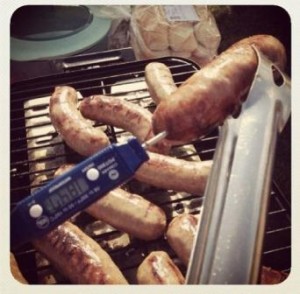This paper introduces a novel method for sampling pathogens in natural environments. It uses fabric boot socks worn over walkers’ shoes to allow the collection of composite samples over large areas. Wide-area sampling is better suited to studies focusing on human exposure to pathogens (e.g., recreational walking).
 This sampling method is implemented using a citizen science approach: groups of three walkers wearing boot socks undertook one of six routes, 40 times over 16 months in the North West (NW) and East Anglian (EA) regions of England.
This sampling method is implemented using a citizen science approach: groups of three walkers wearing boot socks undertook one of six routes, 40 times over 16 months in the North West (NW) and East Anglian (EA) regions of England.
To validate this methodology, we report the successful implementation of this citizen science approach, the observation that Campylobacter bacteria were detected on 47% of boot socks, and the observation that multiple boot socks from individual walks produced consistent results. The findings indicate higher Campylobacter levels in the livestock-dominated NW than in EA (55.8% versus 38.6%). Seasonal differences in the presence of Campylobacter bacteria were found between the regions, with indications of winter peaks in both regions but a spring peak in the NW. The presence of Campylobacter bacteria on boot socks was negatively associated with ambient temperature (P = 0.011) and positively associated with precipitation (P < 0.001), results consistent with our understanding of Campylobacter survival and the probability of material adhering to boot socks. Campylobacter jejuni was the predominant species found; Campylobacter coli was largely restricted to the livestock-dominated NW. Source attribution analysis indicated that the potential source of C. jejuni was predominantly sheep in the NW and wild birds in EA but did not differ between peak and nonpeak periods of human incidence.
Novel sampling method for assessing human-pathogen interactions in the natural environment using boot socks and citizen scientists, with application to campylobacter seasonality
Applied and Environment Microbiology, July 2017, vol. 83, no. 14, Natalia R. Jonesa, Caroline Millmanb, Mike van der Esc, Miroslava Hukelovab, Ken J. Forbesd, Catherine Glovere, Sam Haldenbyf, Paul R. Hunterc, Kathryn Jacksonf, Sarah J. O’Brieng, Dan Rigbyb, Norval J. C. Strachanh, Nicola Williamse, Iain R. Lakea, doi: 10.1128/AEM.00162-17

